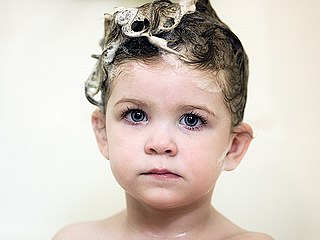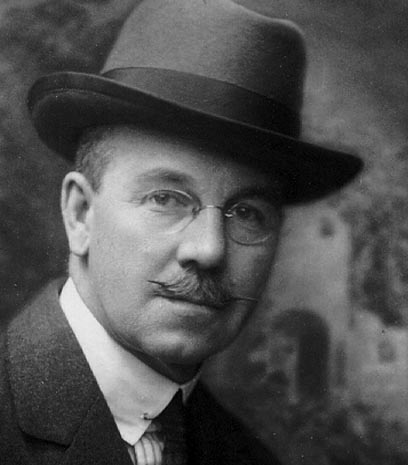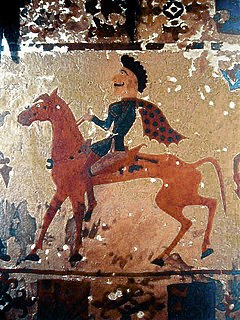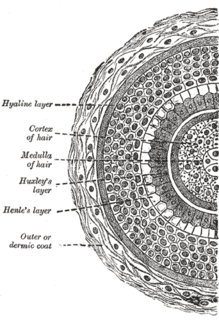
Perfume is a mixture of fragrant essential oils or aroma compounds, fixatives and solvents, used to give the human body, animals, food, objects, and living-spaces an agreeable scent. It is usually in liquid form and used to give a pleasant scent to a person's body. Ancient texts and archaeological excavations show the use of perfumes in some of the earliest human civilizations. Modern perfumery began in the late 19th century with the commercial synthesis of aroma compounds such as vanillin or coumarin, which allowed for the composition of perfumes with smells previously unattainable solely from natural aromatics alone.

Varnish is a clear transparent hard protective finish or film. Varnish has little or no color and has no added pigment as opposed to paint or wood stain which contains pigment. However, some varnish products are marketed as a combined stain and varnish. Varnish is primarily used in wood finishing applications where the natural tones and grains in the wood are intended to be visible. It is applied over wood stains as a final step to achieve a film for gloss and protection. Varnish finishes are usually glossy but may be designed to produce satin or semi-gloss sheens by the addition of "flatting" agents.

Petroleum jelly, petrolatum, white petrolatum, soft paraffin, or multi-hydrocarbon, CAS number 8009-03-8, is a semi-solid mixture of hydrocarbons, originally promoted as a topical ointment for its healing properties.

Rosin, also called colophony or Greek pitch, is a solid form of resin obtained from pines and some other plants, mostly conifers, produced by heating fresh liquid resin to vaporize the volatile liquid terpene components. It is semi-transparent and varies in color from yellow to black. At room temperature rosin is brittle, but it melts at stove-top temperature. It chiefly consists of various resin acids, especially abietic acid. The term "colophony" comes from colophonia resina, Latin for "resin from Colophon", an ancient Ionic city.
Surfboard wax is a formulation of natural and/or synthetic wax for application to the deck of a surfboard, bodyboard, or skimboard, to keep the surfer from slipping off the board when paddling out or riding a wave. It is also used to increase grip on the paddle of a surf kayak or dragon boat.

Mascara is a cosmetic commonly used to enhance the eyelashes. It may darken, thicken, lengthen, and/or define the eyelashes. Normally in one of three forms—liquid, powder, or cream—the modern mascara product has various formulas; however, most contain the same basic components of pigments, oils, waxes, and preservatives. The most common form of mascara is a liquid in a tube.

Hair conditioner is a hair care product used to improve the feel, appearance and manageability of hair. Its main purpose is to reduce friction between strands of hair to allow easier brushing or combing, which might otherwise cause damage to the scalp. Various other benefits are often advertised, such as hair repair, strengthening, or a reduction in split ends.

Hair gel is a hairstyling product that is used to harden hair into a particular hairstyle.

Neatsfoot oil is a yellow oil rendered and purified from the shin bones and feet of cattle. "Neat" in the oil's name comes from an Old English word for cattle. Neatsfoot oil is used as a conditioning, softening and preservative agent for leather. In the 18th century, it was also used medicinally as a topical application for dry scaly skin conditions.
Hair care is an overall term for hygiene and cosmetology involving the hair which grows from the human scalp, and to a lesser extent facial, pubic and other body hair. Hair care routines differ according to an individual's culture and the physical characteristics of one's hair. Hair may be colored, trimmed, shaved, plucked or otherwise removed with treatments such as waxing, sugaring and threading. Hair care services are offered in salons, barbershops and day spas, and products are available commercially for home use. Laser hair removal and electrolysis are also available, though these are provided by licensed professionals in medical offices or speciality spas.

A thickening agent or thickener is a substance which can increase the viscosity of a liquid without substantially changing its other properties. Edible thickeners are commonly used to thicken sauces, soups, and puddings without altering their taste; thickeners are also used in paints, inks, explosives, and cosmetics.
Painterwork accomplishes two things, namely the preservation and the coloration of the material which is painted. The compounds used for painting, taking the word as meaning a thin protective and/or decorative coat, are very numerous, including oil paint of many kinds, distemper, whitewash, tar; but the word paint is usually confined to a mixture of oil and pigment, ground together in a process that thoroughly coats every small particle of pigment in oil, together with other materials which possess properties necessary to enable the paint to dry hard and with a degree of flexibility and to varying degrees of opacity/translucency. Oil paints are made up of four parts, the base, the vehicle, the solvent and the driers. Pigment may be added to these to obtain a paint of any desired color. There are several bases for oil paint, those most commonly used for building work being white lead, red lead, zinc white and iron oxide.

Behenic acid (also docosanoic acid) is a carboxylic acid, the saturated fatty acid with formula C21H43COOH. In appearance, it consists of white to cream color crystals or powder with a melting point of 80 °C and boiling point of 306 °C.
An oil is any nonpolar chemical substance that is a viscous liquid at ambient temperatures and is both hydrophobic and lipophilic. Oils have a high carbon and hydrogen content and are usually flammable and surface active.

Fragrance extraction refers to the separation process of aromatic compounds from raw materials, using methods such as distillation, solvent extraction, expression, sieving, or enfleurage. The results of the extracts are either essential oils, absolutes, concretes, or butters, depending on the amount of waxes in the extracted product.

Shampoo is a hair care product, typically in the form of a viscous liquid, that is used for cleaning hair. Less commonly, shampoo is available in bar form, like a bar of soap. Shampoo is used by applying it to wet hair, massaging the product into the hair, and then rinsing it out. Some users may follow a shampooing with the use of hair conditioner.
Hairstyle products are used to change the texture and/or shape of hair, or to hold a hairstyle in place.
No poo is a collective term for methods of washing hair without commercial shampoo.
Beard oil is a cosmetic product that is used to nourish the skin under the beard, as well as the beard itself in order to keep it "soft, shiny, and smooth". Beard oil mimics the natural oils produced by skin, such as sebum, and is composed mainly of carrier oils and essential oils.



















